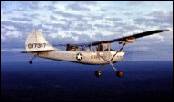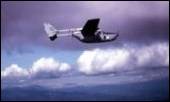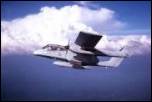Forward Air Controllers, or FACs, in the Southeast Asia conflict were rated pilots whose job it was to
coordinate air-ground operations. FACs could be ground-based with the
troops they were supporting or airborne above the battlefield. The key
to success for this air-ground team was and remains today a close relationship between the
FAC and the supported unit. For this reason, FACs
usually were assigned
to support specific units and live with them. This arrangement has
been used in every U.S. military operation since World War II when
airpower has supported ground forces.
Placing the FAC in an aircraft above the battlefield has proven
most effective and has been used whenever the tactical situation
permitted. In
Southeast Asia, Air Force FACs used three main aircraft: the
Cessna O-1 Bird Dog, the Cessna O-2 Skymaster,
and the North American OV-10 Bronco.
These aircraft provided the low-speed maneuverability and long endurance required for locating and maintaining visual contact with targets over the battlefield.
They also possessed the short, unimproved airfield operating capability needed to live close to the Army.
Each FAC aircraft was equipped with three different radios to coordinate with all the players in the air-ground battle.
An FM radio was provided for communications with the ground forces, a UHF radio to talk to the fighter aircraft, and a VHF radio for contact with the Air Force
Tactical Air Control Party (TACP) to coordinate approvals and requests for air support.
The low performance O-1 and O-2 worked reasonably well during most
of the Vietnam War when the threat consisted primarily of small arms and
light machine guns. Later in the war the threat increased with the
introduction of larger caliber guns and man-portable surface-to-air missiles, and the higher
speed OV-10 became the aircraft of choice. In higher threat areas
in Laos and southern North Vietnam, jet aircraft (the two-seat
F-100F Super Sabres, call sign
Misty, and later the F-4 Phantom II,
call sign Wolf )
were used as fast FACs to direct air strikes against trucks and other targets of opportunity.
The Army used spotters in the O-1 and helicopters, and the Marine Corps employed FACs in the O-1 and OV-10 to control their air assets.
Forward Air Controllers in Southeast Asia were drawn from a variety
of sources. Through an agreement with the Army, all FACs assigned to
support U.S. units had experience as fighter pilots delivering
air-to-ground ordnance. Other pilots were assigned to support Free
World forces (the Army of the Republic of Vietnam, or ARVN, and the
Republic of Korea -- ROK --
army) or as sector FACs with a geographic responsibility. All FAC
candidates attended the Air-Ground Operations School (AGOS) at Hurlburt
Field in Florida (also known as FAC U.) to learn procedures for
coordinating and managing the air-ground battle. Checkout in the O-1
and O-2 was accomplished at nearby Holly Field. Because final unit
assignment was not made until arrival in the theater of
operations, some pilots trained in the O-1 at Holly were assigned to
O-2 units and received training in that aircraft after arrival in Vietnam.
I received my in-country O-2 checkout at Phan Rang AB.
All USAF crew members were required to accomplish Survival,
Escape and Evasion Training at Fairchild AFB in Washington as well as
the
USAF Jungle Survival School ("Snake School") * at Clark AB in the
Philippines.
Air Force FACs were assigned to Tactical Air Support Squadrons
(TASS) for administrative purposes but served in locations across
Southeast Asia. There were four TASS in South Vietnam (19th thru 22nd,
one for each Corp area) and one (23rd) assigned in Thailand.
Overview of O-2 Operations in Vietnam (video link)
Click here for a short history of forward air controllers
and their aircraft.
Download a copy of the USAF Air University book
Mosquitoes to Wolves, a history of the evolution of airborne forward air controllers from Korea through the end of the Southeast Asia conflict.
• Alt
Click here for more on the US Air Force in the war in Southeast Asia.




